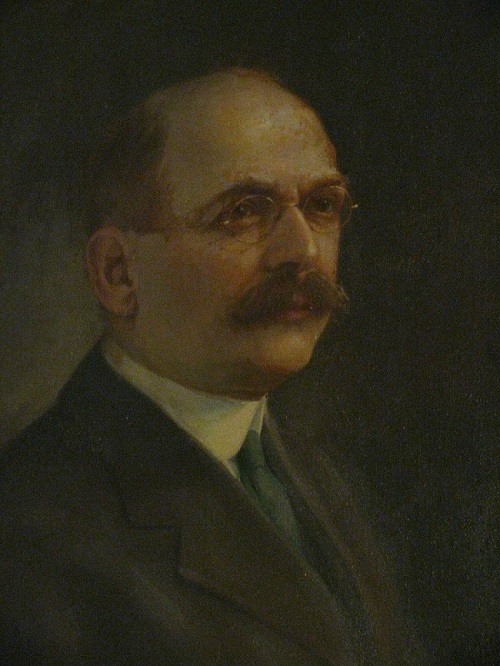Frederick Miles Catlin was born in Erie Pennsylvania on October 31, 1859. He graduated from Cornell University in 1881. He was admitted to the Pennsylvania Bar in 1994. Feeling the “Call of the West” in 1994, he started out for Seattle. He was changing trains in St. Paul and met up with friends, who persuaded him to stay. He was admitted to the Minnesota Bar that same year, and began practicing law in St. Paul. In 1898 he married Bertha Crosman, with whom he had two daughters: Eleanor and Elizabeth. Catlin served in the Minnesota National Guard as a First Lieutenant and Judge Advocate. He was commissioned a First Lieutenant of the 15th Minnesota Infantry when the Spanish-American War broke out, and remained in service until the war closed in 1899. He ran for the state legislature in 1900, but was defeated.
He returned to the practice of law until 1911, when he was appointed Vice-President of the St. Paul Police Board. The Board President resigned shortly thereafter, and Catlin was thus appointed to that office. When the Chief of Police John O’Connor abruptly resigned and no proper successor could be found, Catlin became the Acting Chief of Police. According to The St. Paul Globe, O’Connor deliberately resigned 5 months before the mayoral election so as to send the City into a “reign of terror” and discredit then-Mayor Kelly. (The St. Paul Globe – 5-2-1912) Catlin sought to bring “efficiency” to the Department, organizing the Police Traffic Squad in 1912. But Catlin told reporters that he did not like police work and was a lawyer at heart. (Catlin was one of three Acting Chiefs from 1912-1913, before O’Connor was reinstated in 1914. According to information from the St. Paul Police Historical Society, Chief O’Connor reigned from 1900 to 1920 with the exception of a 2 year period during this time. Typically, politically connected men would be forced out of positions when a new mayor of different political stripes came into power. )
In 1913, Catlin’s police career finally ended when was appointed to the Ramsey County District bench to complete the unexpired 2-year term of Judge Hallam. During his term he issued an injunction against state law that ordered a minimum wage for women and minor workers. (The New York Times – 11-24-1914.) He then returned to the practice of law, only to be appointed again to fill the unexpired 2-year term of Judge Dickson in 1921. This term ended in 1923, after which he again returned to the practice of law. His health slowly deteriorated, and he died in 1929.
Catlin’s career may be a reflection of how political the community was at the time. He may have been an attractive “neutral” candidate during a corrupt era for many of these appointed positions that he held, as he lacked longstanding family or school connections in this area. For the same reason, he may have lacked a loyal voting base which could have carried him to an electoral victory.
The Law Librarian thanks the individuals at the St. Paul Police Historical Society, as well as the St. Paul Public Library and their excellent newspaper clipping collection for their assistance with this blog post.
POST-CORRECTION (Added November 6, 2013): O’Connor’s resignation and the resulting “reign of terror” were described by the St. Paul Pioneer Press, not the St. Paul Globe. The Mayor at the time was Herbert Keller, not Kelly.
